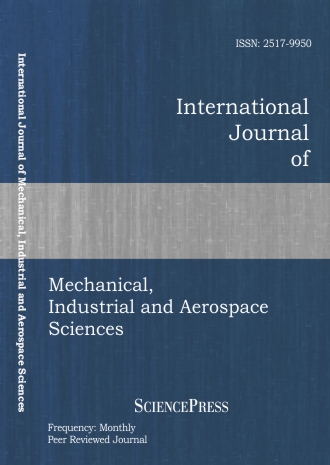
Scholarly
Volume:14, Issue: 12, 2020 Page No: 558 - 561
International Journal of Mechanical, Industrial and Aerospace Sciences
ISSN: 2517-9950
Multilayer Thermal Screens for Greenhouse Insulation
Greenhouse cultivation is an energy-intensive process due to the high demands on cooling or heating according to external climatic conditions, which could be extreme in the summer or winter seasons. The thermal radiation rate inside a greenhouse depends mainly on the type of covering material and greenhouse construction. Using additional thermal screens under a greenhouse covering combined with a dehumidification system improves the insulation and could be cost-effective. Greenhouse covering material usually contains protective ultraviolet (UV) radiation additives to prevent the film wear, insect harm, and crop diseases. This paper investigates the overall heat transfer coefficient, or U-value, for greenhouse polyethylene covering contains UV-additives and glass covering with or without a thermal screen supplement. The hot-box method was employed to evaluate overall heat transfer coefficients experimentally as a function of the type and number of the thermal screens. The results show that the overall heat transfer coefficient decreases with increasing the number of thermal screens as a hyperbolic function. The overall heat transfer coefficient highly depends on the ability of the material to reflect thermal radiation. Using a greenhouse covering, i.e., polyethylene films or glass, in combination with high reflective thermal screens, i.e., containing about 98% of aluminum stripes or aluminum foil, the U-value reduces by 61%-89% in the first case, whereas by 70%-92% in the second case, depending on the number of the thermal screen. Using thermal screens made from low reflective materials may reduce the U-value by 30%-57%. The heat transfer coefficient is an indicator of the thermal insulation properties of the materials, which allows farmers to make decisions on the use of appropriate thermal screens depending on the external and internal climate conditions in a greenhouse.